BMW 2012 Annual Report Download - page 139
Download and view the complete annual report
Please find page 139 of the 2012 BMW annual report below. You can navigate through the pages in the report by either clicking on the pages listed below, or by using the keyword search tool below to find specific information within the annual report.-
 1
1 -
 2
2 -
 3
3 -
 4
4 -
 5
5 -
 6
6 -
 7
7 -
 8
8 -
 9
9 -
 10
10 -
 11
11 -
 12
12 -
 13
13 -
 14
14 -
 15
15 -
 16
16 -
 17
17 -
 18
18 -
 19
19 -
 20
20 -
 21
21 -
 22
22 -
 23
23 -
 24
24 -
 25
25 -
 26
26 -
 27
27 -
 28
28 -
 29
29 -
 30
30 -
 31
31 -
 32
32 -
 33
33 -
 34
34 -
 35
35 -
 36
36 -
 37
37 -
 38
38 -
 39
39 -
 40
40 -
 41
41 -
 42
42 -
 43
43 -
 44
44 -
 45
45 -
 46
46 -
 47
47 -
 48
48 -
 49
49 -
 50
50 -
 51
51 -
 52
52 -
 53
53 -
 54
54 -
 55
55 -
 56
56 -
 57
57 -
 58
58 -
 59
59 -
 60
60 -
 61
61 -
 62
62 -
 63
63 -
 64
64 -
 65
65 -
 66
66 -
 67
67 -
 68
68 -
 69
69 -
 70
70 -
 71
71 -
 72
72 -
 73
73 -
 74
74 -
 75
75 -
 76
76 -
 77
77 -
 78
78 -
 79
79 -
 80
80 -
 81
81 -
 82
82 -
 83
83 -
 84
84 -
 85
85 -
 86
86 -
 87
87 -
 88
88 -
 89
89 -
 90
90 -
 91
91 -
 92
92 -
 93
93 -
 94
94 -
 95
95 -
 96
96 -
 97
97 -
 98
98 -
 99
99 -
 100
100 -
 101
101 -
 102
102 -
 103
103 -
 104
104 -
 105
105 -
 106
106 -
 107
107 -
 108
108 -
 109
109 -
 110
110 -
 111
111 -
 112
112 -
 113
113 -
 114
114 -
 115
115 -
 116
116 -
 117
117 -
 118
118 -
 119
119 -
 120
120 -
 121
121 -
 122
122 -
 123
123 -
 124
124 -
 125
125 -
 126
126 -
 127
127 -
 128
128 -
 129
129 -
 130
130 -
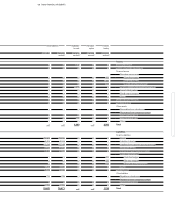 131
131 -
 132
132 -
 133
133 -
 134
134 -
 135
135 -
 136
136 -
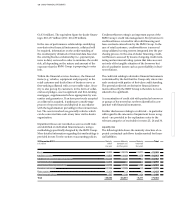 137
137 -
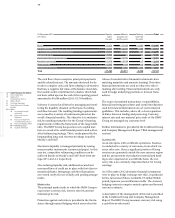 138
138 -
 139
139 -
 140
140 -
 141
141 -
 142
142 -
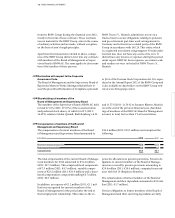 143
143 -
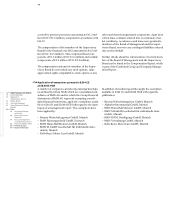 144
144 -
 145
145 -
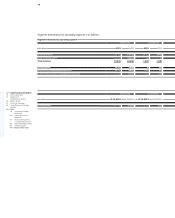 146
146 -
 147
147 -
 148
148 -
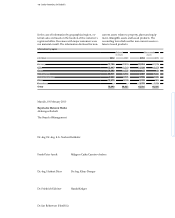 149
149 -
 150
150 -
 151
151 -
 152
152 -
 153
153 -
 154
154 -
 155
155 -
 156
156 -
 157
157 -
 158
158 -
 159
159 -
 160
160 -
 161
161 -
 162
162 -
 163
163 -
 164
164 -
 165
165 -
 166
166 -
 167
167 -
 168
168 -
 169
169 -
 170
170 -
 171
171 -
 172
172 -
 173
173 -
 174
174 -
 175
175 -
 176
176 -
 177
177 -
 178
178 -
 179
179 -
 180
180 -
 181
181 -
 182
182 -
 183
183 -
 184
184 -
 185
185 -
 186
186 -
 187
187 -
 188
188 -
 189
189 -
 190
190 -
 191
191 -
 192
192 -
 193
193 -
 194
194 -
 195
195 -
 196
196 -
 197
197 -
 198
198 -
 199
199 -
 200
200 -
 201
201 -
 202
202 -
 203
203 -
 204
204 -
 205
205 -
 206
206 -
 207
207 -
 208
208 -
 209
209 -
 210
210 -
 211
211 -
 212
212 -
 213
213 -
 214
214 -
 215
215 -
 216
216 -
 217
217 -
 218
218 -
 219
219 -
 220
220 -
 221
221 -
 222
222 -
 223
223 -
 224
224 -
 225
225 -
 226
226 -
 227
227 -
 228
228 -
 229
229 -
 230
230 -
 231
231 -
 232
232 -
 233
233 -
 234
234 -
 235
235 -
 236
236 -
 237
237 -
 238
238 -
 239
239 -
 240
240 -
 241
241 -
 242
242 -
 243
243 -
 244
244 -
 245
245 -
 246
246 -
 247
247 -
 248
248 -
 249
249 -
 250
250 -
 251
251 -
 252
252 -
 253
253 -
 254
254 -
 255
255 -
 256
256 -
 257
257 -
 258
258 -
 259
259 -
 260
260 -
 261
261 -
 262
262 -
 263
263 -
 264
264 -
 265
265 -
 266
266 -
 267
267 -
 268
268 -
 269
269 -
 270
270 -
 271
271 -
 272
272 -
 273
273 -
 274
274 -
 275
275 -
 276
276 -
 277
277 -
 278
278 -
 279
279 -
 280
280 -
 281
281 -
 282
282 -
 283
283 -
 284
284
 |
 |

139 GROUP FINANCIAL STATEMENTS
in € million 31. 12. 2012 31. 12. 2011
Euro / Chinese Renminbi 246 180
Euro / US Dollar 163 121
Euro / British Pound 65 182
Euro / Japanese Yen 15 23
Euro / Russian Rouble 69 97
in € million 31. 12. 2012 31. 12. 2011
Euro 12,736 6,066
US Dollar 10,489 8,684
British Pound 3,814 3,278
In the next stage, these exposures are compared to all
hedges that are in place. The net cash flow surplus
represents an uncovered risk position. The cash-flow-at-
risk approach involves allocating the impact of poten-
tial exchange rate fluctuations to operating cash flows
on the basis of probability distributions. Volatilities
and correlations serve as input factors to assess the rele-
vant probability distributions.
The potential negative impact on earnings is computed
for each currency for the following financial year on
the basis of current market prices and exposures to a
Currency risk for the BMW Group is concentrated on
the
currencies referred to above.
Interest rate risk
The BMW Group’s financial management system in-
volves
the use of standard financial instruments such as
short-term deposits, investments in variable and fixed-
income securities as well as securities funds. The BMW
Group is therefore exposed to risks resulting from
changes in interest rates.
confidence level of 95 % and a holding period of up to
one year. Correlations between the various currencies
are taken into account when the risks are aggregated,
thus reducing the overall risk.
The following table shows the potential negative impact
for the BMW Group – measured on the basis of the cash-
flow-at-risk approach – attributable to unfavourable
changes in exchange rates. The impact for the principal
currencies, in each case for the following financial year,
is as follows:
These risks arise when funds with differing fixed-rate
periods or differing terms are borrowed and invested.
All items subject to, or bearing, interest are exposed to
interest rate risk. Interest rate risks can affect either side
of the balance sheet.
The fair values of the Group’s interest rate portfolios for
the three principal currencies were as follows at the end
of the reporting period:
The starting point for analysing currency risk with this
model is the identification of forecast foreign currency
transactions or “exposures”. At the end of the reporting
period, the principal exposures for the relevant coming
year were as follows:
in € million 31. 12. 2012 31. 12. 2011
Euro / Chinese Renminbi 8,429 7,114
Euro / US Dollar 5,311 4,281
Euro / British Pound 3,206 3,266
Euro / Japanese Yen 1,585 1,334
Euro / Russian Rouble 1,638 1,330
